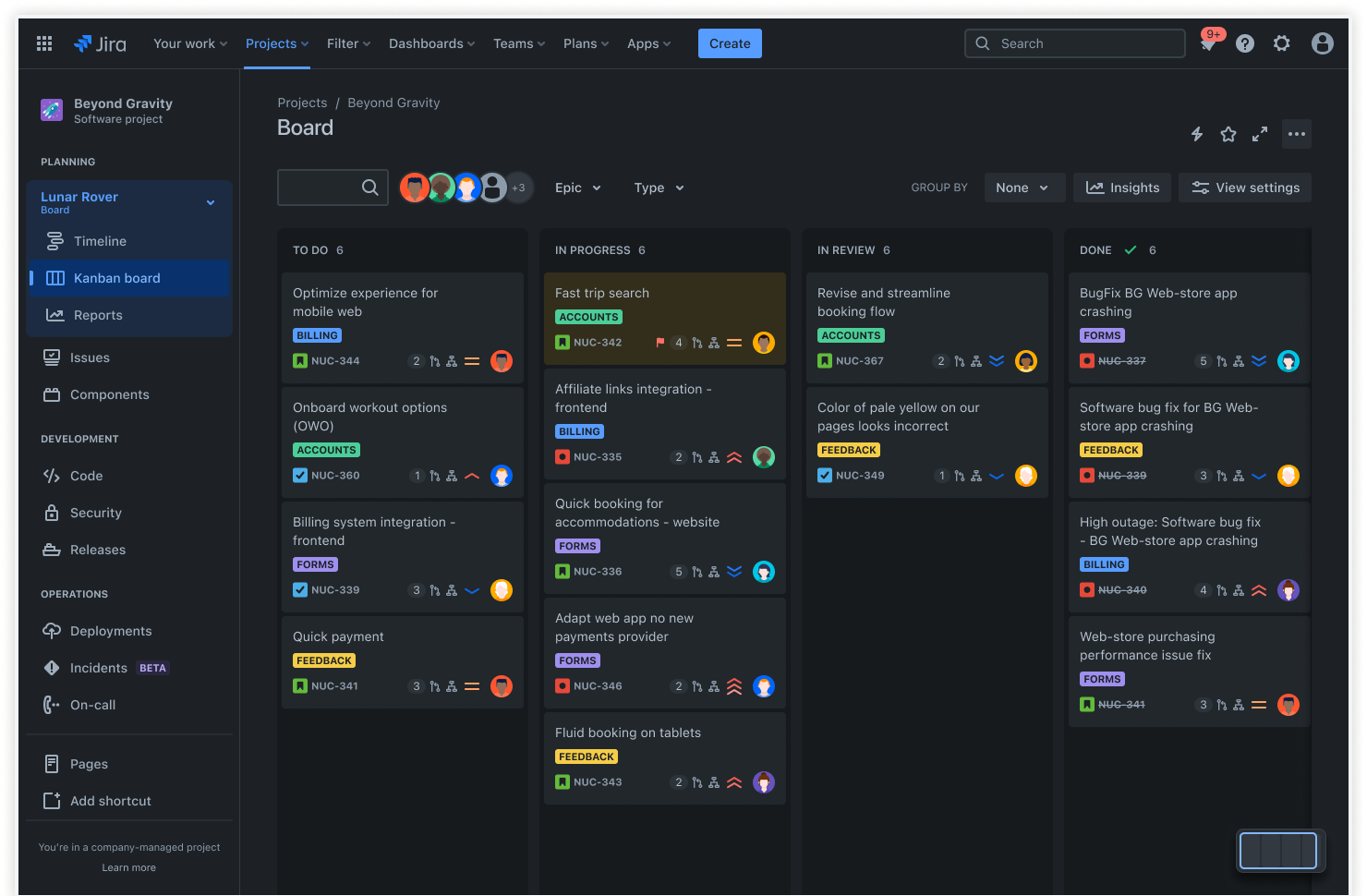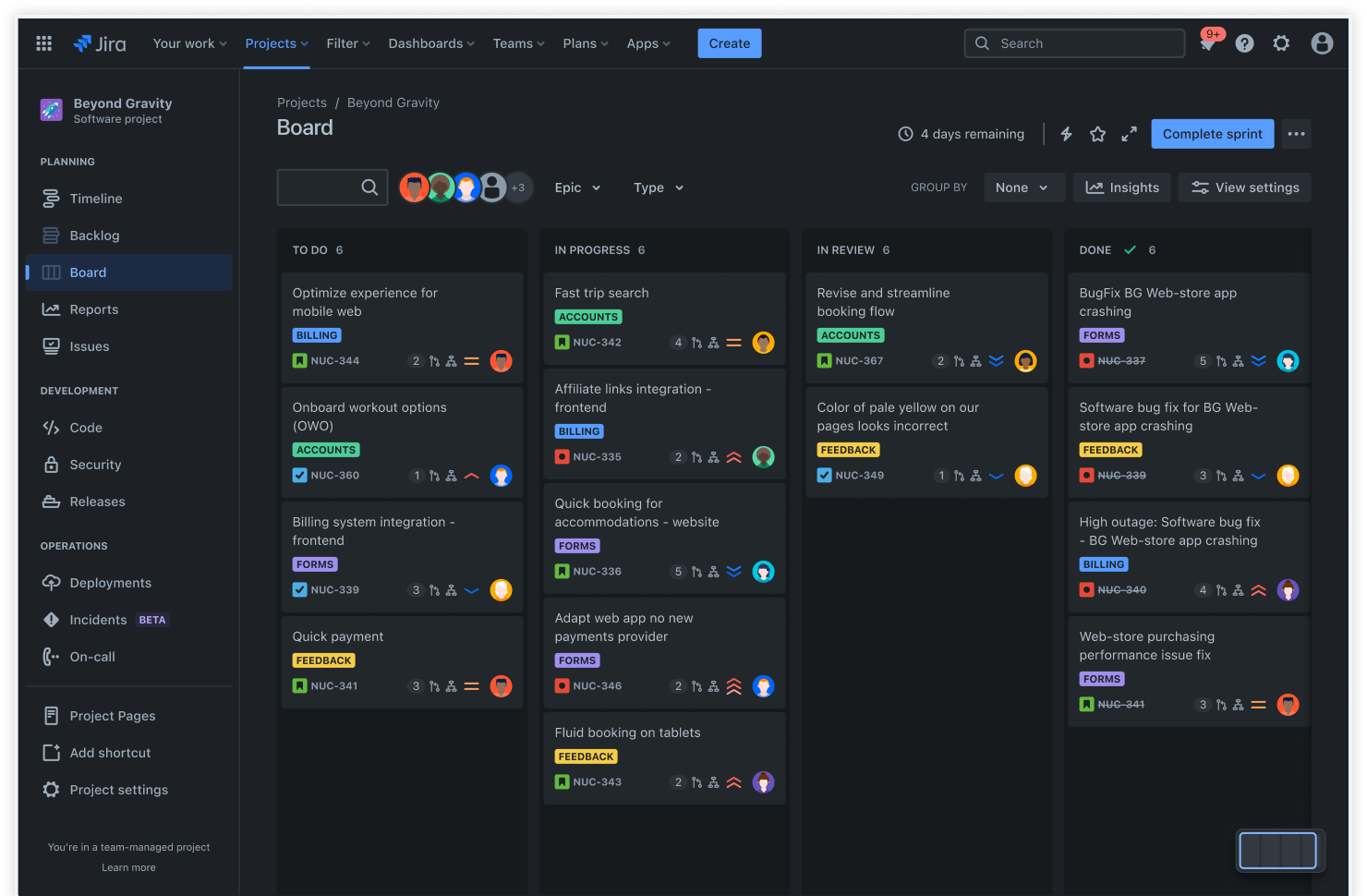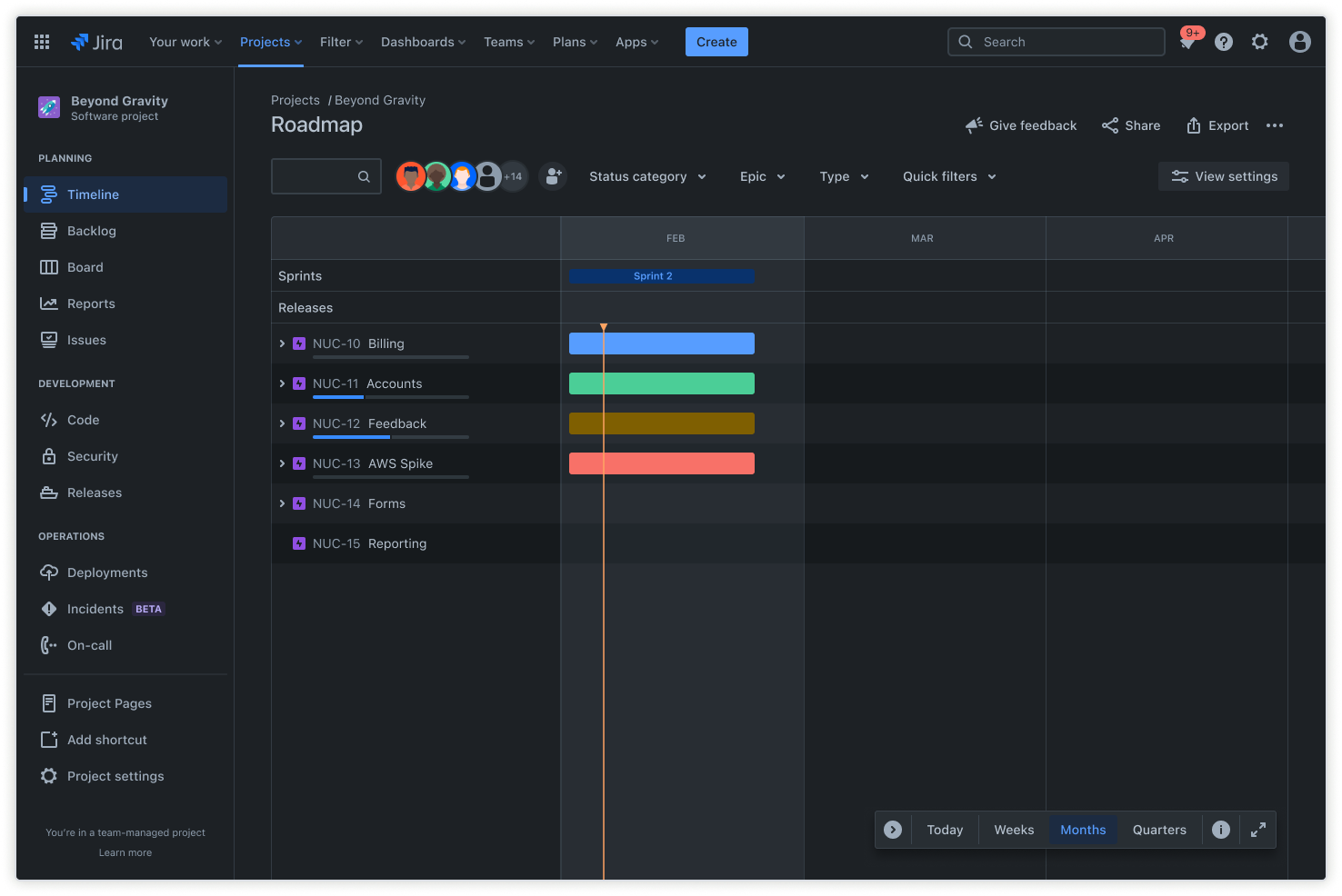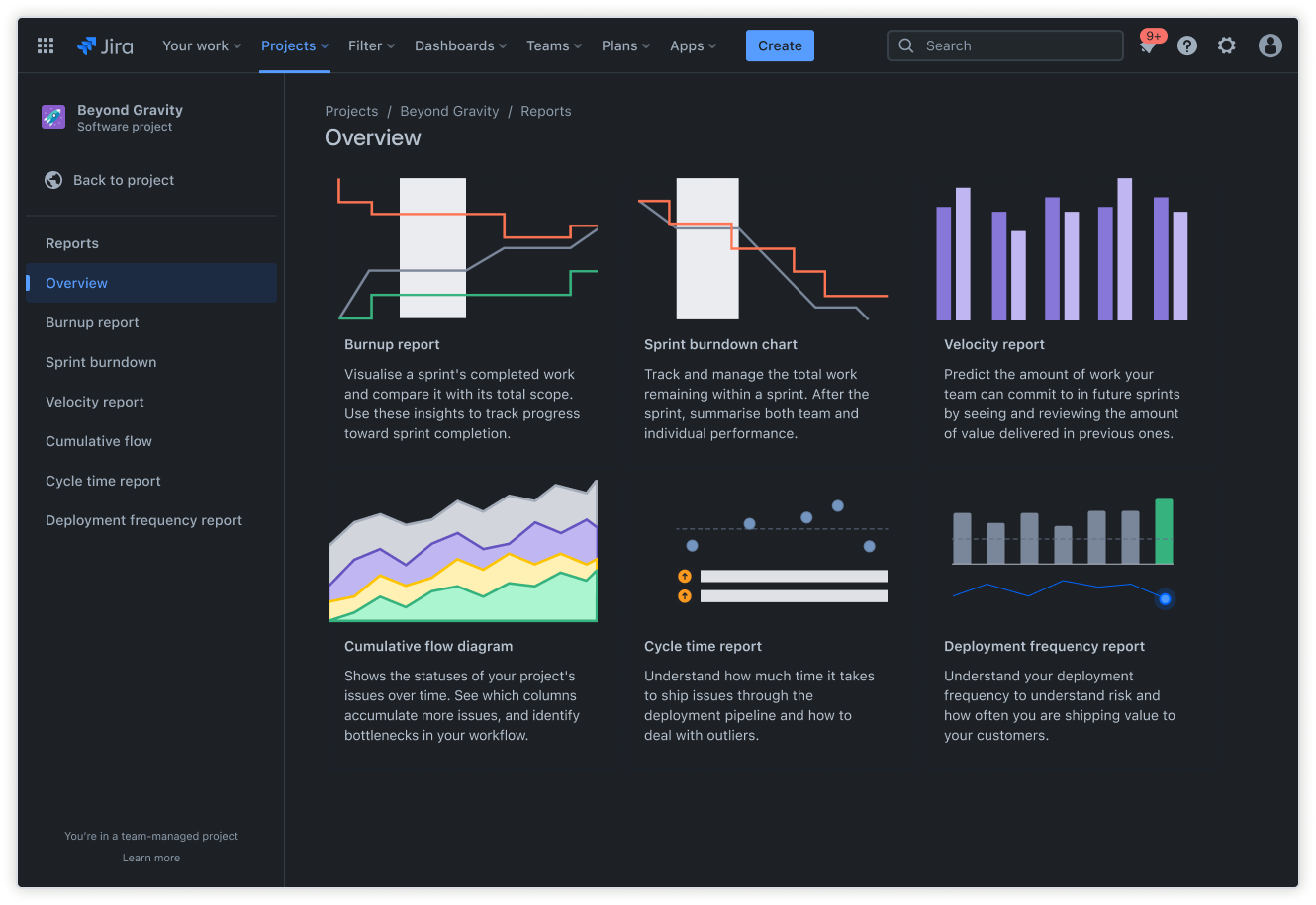The best project tracking software to enhance visibility
Jira is a powerful project-tracking tool that helps teams stay organized and boosts visibility. As users update Jira, the status of work items and projects adjust automatically, offering real-time insight into team tasks and progress.

What is project tracking software?
Project tracking software keeps projects on schedule and within budget by providing visibility into the status of tasks and issues. It also helps project managers and team members monitor the progress of tasks, milestones, and deliverables to allocate resources appropriately.
Team members can assign tasks, set due dates, and delegate work directly within the project tracking software. Assignments are visible to the assigned team members, holding them accountable and reminding them of upcoming deadlines. Team members can also leave comments on tasks to provide clarification and receive feedback.
Benefits of project tracking software
Project tracking software provides real-time access to information for everyone on a team, eliminating surprises and delays caused by communication gaps.
Collaboration
Project tracking software provides a centralized hub that enables real-time communication, collaboration, and updates among team members. Everyone can access the most current project details, tasks, and discussions in one place, enhancing transparency and improving team productivity and efficiency.
Improved project planning
Project tracking software can help teams create detailed project plans, set timelines and deadlines, automate scheduling, and track progress. The project planning process starts with breaking down your project into manageable tasks and assigning those tasks to team members accordingly. Milestones keep teams focused on achieving critical checkpoints along the way.
Resource management
When project managers see where resources are allocated, they can make better decisions to balance workloads and avoid bottlenecks. Project tracker software supports efficient company resource planning and allocation while visibility, workload monitoring, and balanced task distribution maximize the productivity of project teams and resources. Without software to provide this transparency, inequities in task distribution can develop.
Transparency
When all tasks, issues, and milestones are recorded in a central place, everyone on the team has a clear view of where things stand. Project tracking software gives everyone a single source of truth for what is complete, what still needs to be done, and where risks may be emerging.
The visibility, early warnings, and accountability it provides are invaluable for keeping projects within budget and on time. This visibility helps flag potential problems early before they become serious delays.
Data-driven decision-making
Project tracking software provides a wide range of benefits through reporting and analytics, giving managers real-time updates on project progress, budgets, resource allocation, and more. Dashboards offer at-a-glance views of key metrics to see if projects are on track, within budget, or require attention. Over time, these data-driven decisions translate into significant gains in project efficiency and overall success. By revealing these insights, project tracking software helps managers develop best practices, refine processes, and optimize resource allocation for future projects.
Key features of project tracking software
Visual task boards
Project tracking software with features such as Kanban and Scrum boards provides teams with a simple yet powerful way to organize work and gain real-time visibility into project health and progress. The visual, drag-and-drop functionality of task boards makes task management collaborative and helps teams stay on track and meet their goals.

Timeline views
Project timeline features in project tracking software provide an invaluable tool for monitoring progress, spotting issues, and ensuring projects stay within planned timelines. The visual representation of tasks, dependencies, and delays helps you make more informed decisions, such as assigning additional resources to specific tasks or breaking down large tasks into smaller ones to keep projects on track. Spotting these dependencies early allows you to take corrective action to mitigate delays.

Reporting and analytics
Project tracking software logs critical project data and generates detailed reports, providing data-driven insights that help teams improve project scheduling, resource allocation, bottleneck identification, and overall project management. The reports serve as objective benchmarks for evaluating project performance and identifying opportunities for continuous improvement, helping managers optimize resource allocation to ensure tasks are completed efficiently and on time.

Best practices for project tracking in Jira
Project tracking software in Jira can provide project visibility, improve organization and communication, and boost team productivity. Implement the following best practices to enhance your project tracking initiatives:
- Establish a clear project workflow and assign the correct issue types and statuses.
- Assign issues to relevant team members and set due dates for all tasks.
- Use relevant templates to create a comprehensive project plan.
- Encourage teams to add comments and update statuses regularly.
- Link related issues so team members have full context when working.
- Assign team members issues, so they receive notifications when statuses change.
- Hold stand-up meetings or check-ins regularly to discuss roadblocks, dependencies, and next steps.